Excerpts from Jim Conrad's
Naturalist Newsletter
from the November 30, 2018 Newsletter with notes from a camping trip into Chiapas, the southernmost state of MÉXICO
FLOR DE CACAO TREE
Last October 3rd at the woods edge at Maya Bell Campground near the ruins of Palenque, in Mexico's southernmost state of Chiapas, a smallish tree with slender stems was flowering, as shown below:
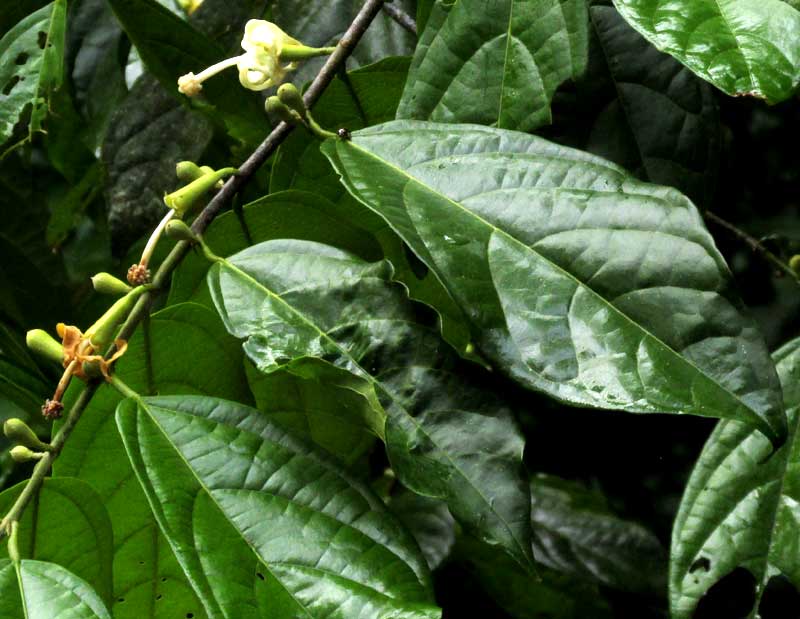
Even at a distance it was clear that here was a member of the big Hibiscus Family, the Malvaceae, because of the profile exhibited by the open blossom in the above picture. A closer look at that flower appear below:
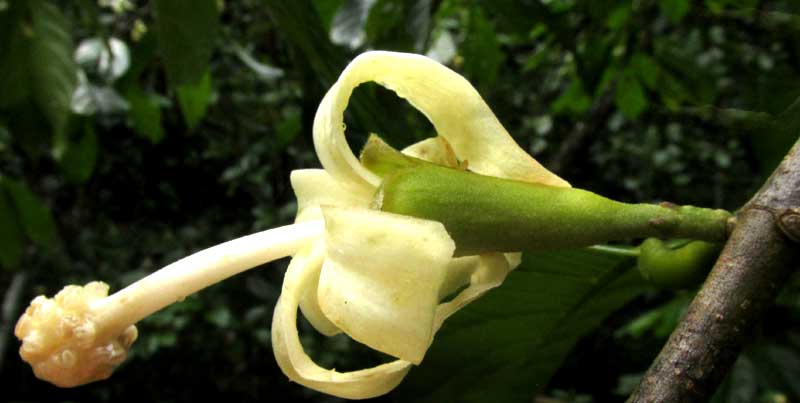
The feature indicating that our tree was a member of the Hibiscus Family was the manner by which the several pollen-producing stamens merge by their stem-like filaments to form a long, white cylinder encircling the stigma's style. To better show this diagnostic feature I cut a flower's "staminal column" -- the white cylinder -- down the middle, disclosing what's seen below:
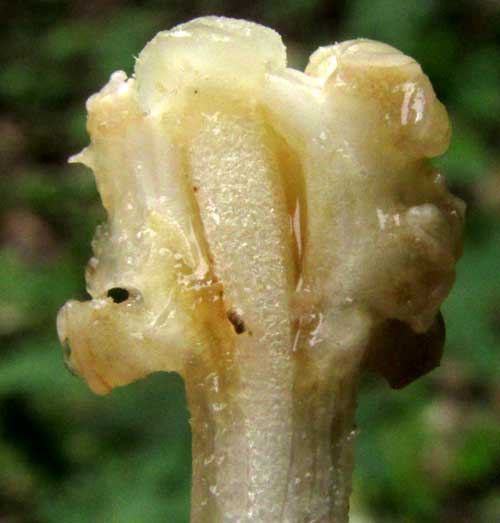
At top, center in that image, the smooth, glossy thing is the stigma, where pollen from other flowers is supposed to be deposited. The vertical column below the stigma is its style, which is a kind of neck atop the ovary at the blossom's bottom. On both sides of the style, the objects shaped like creased bananas are anther cells, from which pollen is released.
Along certain limbs, peculiar objects grew like the one shown below:
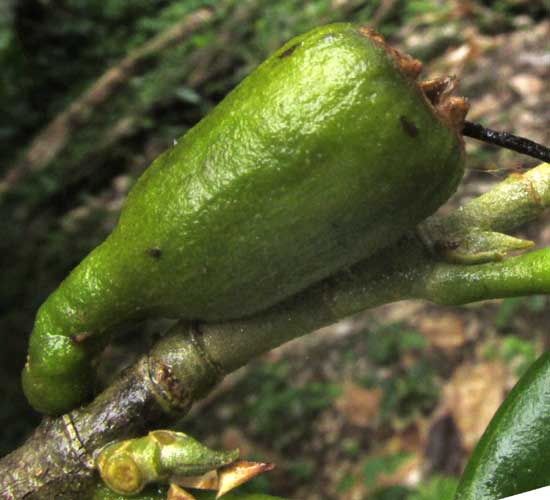
At first I thought this was an immature fruit, but if it were a fruit, the sepals at its top would make the fruit derive from an inferior ovary (corolla and sexual parts arising atop the ovary, as opposed to a superior ovary with corolla and sexual parts arising at the ovary's base) -- and the Hibiscus Family produces only superior ovaries. Therefore, what's shown is a large flower bud. Also worth noting in the above picture are the stipular rings encircling the stem, very similar to what occurs on twigs of unrelated Magnolias.
The tree's smooth bark with splotchy lichens is shown below:
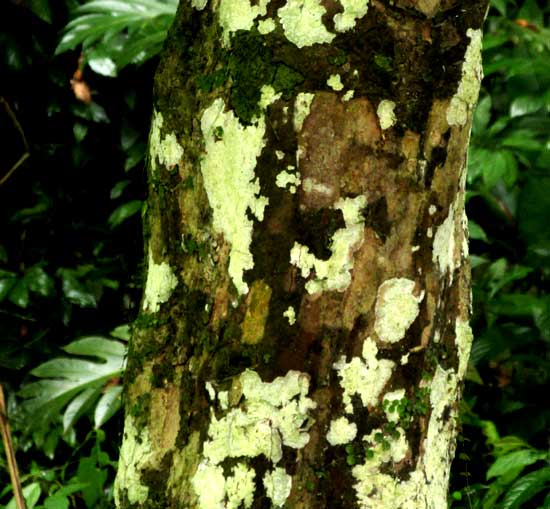
The Hibiscus Family is huge, but all the above features were distinctive enough that I felt sure of being able to identify the little tree. My confidence rested especially on the fact that the flower structure and tree form suggested that this species was a member of what used to be known as the Bombax Family, the Bombacaceae. Since genetic analysis has become possible, now the fairly small Bombax Family has been "sunken" to sub-group level in the Hibiscus Family. The best-known members of the old Bombax Family are the Ceiba and tropical Africa's Baobab tree.
It was QUARARIBEA FUNEBRIS, with no good English name but in Spanish variously known as Flor de Cacao (Cacao Flower, Cacao being the source of chocolate), Rosita de Cacao, and other names. The mention of Cacao in the names comes about from the use of the tree's dried, spicy flowers to flavor a thick, frothy, aromatic, chocolate-based, traditional drink called tejate or pozonque. The flowers and fruits also have been used in traditional medicine to control fevers and alleviate menstruation pains. The pressed and dried leaves are said to smell strongly of maple syrup. I'm astonished that during my flower dissection I never noted any odor at all.
The tree's chalky white or slightly yellowish wood is described as of good quality -- tough and strong, easy to work, takes a smooth finish -- but it doesn't stand up well when exposed to the elements.
Quararibea funebris is distributed along the Atlantic slope of southern and central Mexico south to Costa Rica.